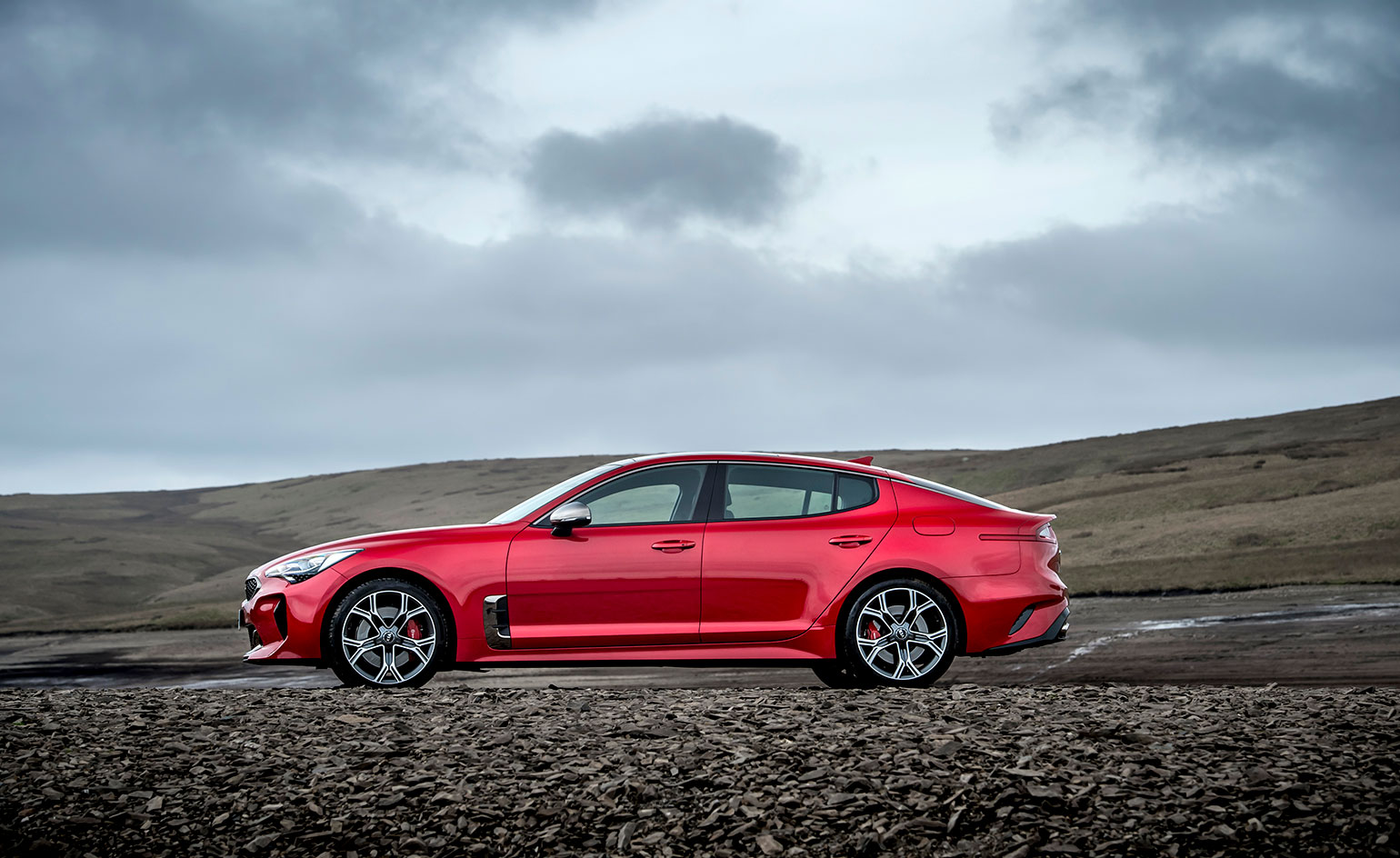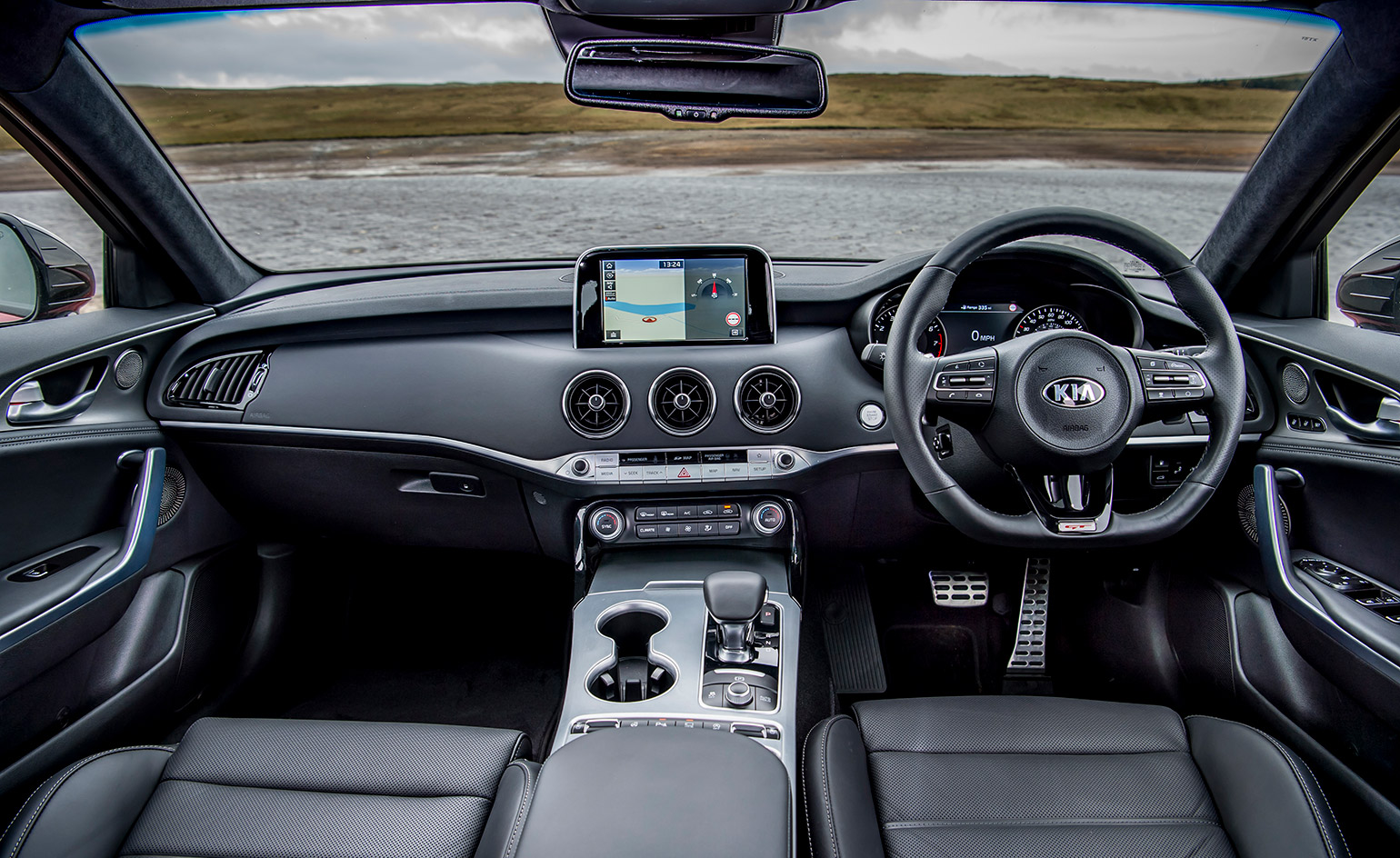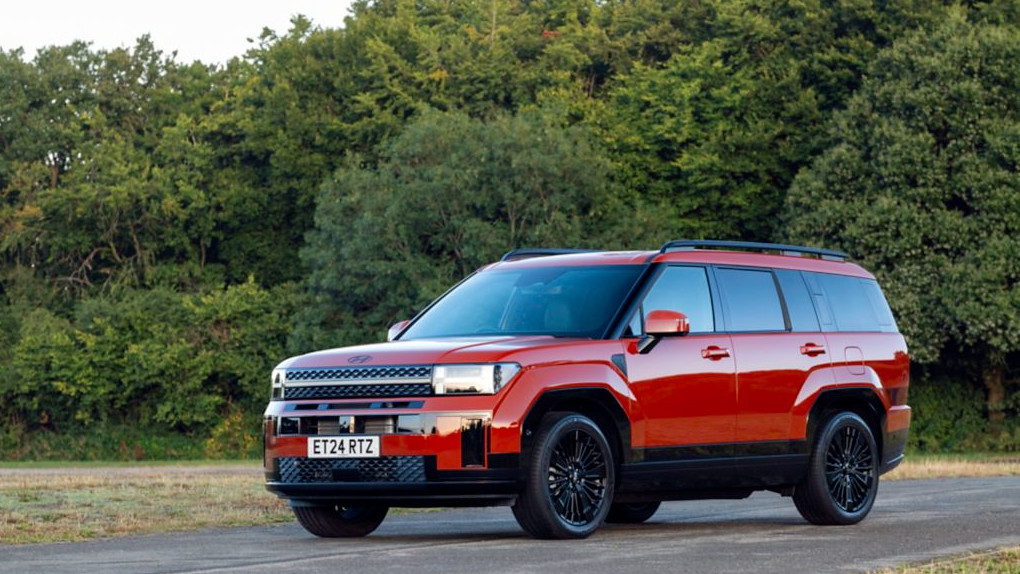Kia Stinger GT S balances high-end design with technological focus

If you blindfolded the average driver and sat them behind the wheel of Kia’s new Stinger, we wager they’d struggle to identify the precise make and model they occupied. In pitching its new flagship saloon at the upper middle end of the saloon car market – in terms of scale, equipment level and price – Kia has effortlessly demonstrated its ability to deploy design and engineering to whatever end it sets its mind to.
Cartoonish name aside, the Stinger is something of a brand revolution for this resolutely mass-market South Korean company. In every way, it comes across as a hugely competent take on performance car design, ticking all boxes offered up by rivals with decades’ more experience. Kia and its sister company Hyundai began by resolving to re-shape the mass market car. Rigorous engineering came first, following by a design revolution, largely achieved by distilling the best minds from Europe’s biggest brands (and remember that car design is a largely internationalist occupation) into concentrated quantities of brand essence.

Pushed, the Stinger GT S can reach a top speed of 170 mph
These concoctions proved remarkably potent, and the South Korean industry is now riding high on quality, both real and perceived. So much so, in fact, that its principal manufacturers are starting to mix a little fun in with the serious business of shifting units (Hyundai Kia sold about 7.25 million cars in 2017). The Stinger is a manifestation of this, an almost transparent attempt to siphon the best qualities of high-end German car design through the techno-centric focus the company has been known for.
A four door liftback saloon, the Stinger has the kind of hefty proportions favoured by Audi’s A7. In this era of diminutive city cars and SUVs and crossovers of all shapes and sizes, the big saloon car is something of an anachronism to buyers. Car designers, however, still relish the freedom of such a generous palette. The Stinger is a sort of designer treat, a gift to himself from Peter Schreyer, the talented German chief designer who has overseen Hyundai Kia’s journey into the spotlight. There’s some wayward brightwork – bonnet vents without a purpose, the occasional leery spoiler – but overall this is a handsome machine. In GT S trim, the Stinger is also a fine performer, balanced and throaty with a sub five second sprint time and a proper Autobahn-bothering top speed (nudging 170 mph, if you’re ever geographically able to test it).
In short, it’s a true GT car, one that comfortably undercuts its rivals in price. The Stinger also undercuts the hard-won cultural meaning of established brands. Does a high performance, beautifully made and elegant looking motor car have to be German? And in the next years, as the throaty old internal combustion engine is removed from the equation, you can expect even more unrest.

The Stinger arrives at a time where Kia is riding high on quality, proof that not every high performance, beautifully made and elegant looking motor car has to be German

The Stinger is a solid performer on the road, balanced and throaty with a sub 5 second sprint time

Hyundai Kia sold about 7.25m cars in 2017, and the Stinger is a manifestation of this market desire for fun in design
INFORMATION
Kia Stinger GT S, from £40,495. For more information, visit the Kia website
Receive our daily digest of inspiration, escapism and design stories from around the world direct to your inbox.
Jonathan Bell has written for Wallpaper* magazine since 1999, covering everything from architecture and transport design to books, tech and graphic design. He is now the magazine’s Transport and Technology Editor. Jonathan has written and edited 15 books, including Concept Car Design, 21st Century House, and The New Modern House. He is also the host of Wallpaper’s first podcast.
-
 How We Host: Interior designer Heide Hendricks shows us how to throw the ultimate farmhouse fête
How We Host: Interior designer Heide Hendricks shows us how to throw the ultimate farmhouse fêteThe designer, one half of the American design firm Hendricks Churchill, delves into the art of entertaining – from pasta to playlists
-
 Arbour House is a north London home that lies low but punches high
Arbour House is a north London home that lies low but punches highArbour House by Andrei Saltykov is a low-lying Crouch End home with a striking roof structure that sets it apart
-
 25 of the best beauty launches of 2025, from transformative skincare to offbeat scents
25 of the best beauty launches of 2025, from transformative skincare to offbeat scentsWallpaper* beauty editor Mary Cleary selects her beauty highlights of the year, spanning skincare, fragrance, hair and body care, make-up and wellness
-
 The future of off-road is encapsulated in Hyundai’s rugged Crater Concept
The future of off-road is encapsulated in Hyundai’s rugged Crater ConceptAn exploration of the future form of Hyundai’s XRT sub-brand, the Crater Concept is designed to roam where no one else goes
-
 All the new electric cars and concepts revealed at Munich’s IAA Mobility 2025
All the new electric cars and concepts revealed at Munich’s IAA Mobility 2025Munich’s alternative motorshow is now in its third iteration, combining a traditional exhibition space with a conference and large-scale public activations on the streets of the city
-
 An instant modern classic, the new Hyundai Inster is an all-conquering, all-electric city car
An instant modern classic, the new Hyundai Inster is an all-conquering, all-electric city carSmall EVs are making big waves as the tech continues to evolve. Hyundai shows everyone else how to do it
-
 The raucous Hyundai Ioniq 5N EV has the sound and feel of an old school sports car
The raucous Hyundai Ioniq 5N EV has the sound and feel of an old school sports carHyundai is an unlikely saviour of the sporting EV, finding new ways of transforming the sheer power of electrification into an engaging, albeit old school, driver’s car
-
 All the best bits from Goodwood Festival of Speed 2025
All the best bits from Goodwood Festival of Speed 2025As car makers switch their allegiance to the sunny West Sussex countryside as a place to showcase their wares, a new generation of sports cars were sent running up that famous hill
-
 Comfort, kit and enduring aesthetics make the Hyundai Santa Fe utilitarian and upmarket
Comfort, kit and enduring aesthetics make the Hyundai Santa Fe utilitarian and upmarketTough looks conceal premium features as Hyundai takes its plug-in hybrid SUV upmarket. Wallpaper* tries out the stylish new South Korean 7-seater
-
 Our pick of the reveals at the 2025 New York Auto Show, from concept SUVs to new EVs
Our pick of the reveals at the 2025 New York Auto Show, from concept SUVs to new EVsInterest in overseas brands remained strong at this year’s NY Auto Show despite the threat of tariffs designed to boost American-owned brands
-
 2025 Seoul Mobility Show report: all that's new and notable
2025 Seoul Mobility Show report: all that's new and notableOpened at a time of high national drama, the 2025 Seoul Mobility Show has gone on to underscore Korea’s place at the cutting edge of the auto industry. Guy Bird was there